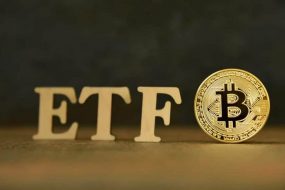
In the ever-evolving landscape of cryptocurrencies, Bitcoin remains the undisputed pioneer and a beacon of innovation. However, a common source of confusion among users revolves around the fundamental disparity between buying and sending Bitcoin. At Vegavid, we understand the importance of clarity in navigating the crypto seas. In this comprehensive guide, we delve into the nuances of buying and sending Bitcoin, shedding light on their distinct purposes and operations.
Understanding the Basics:
It operates on a decentralized platform called the blockchain, where transactions are verified through cryptography and recorded immutably. Before exploring the differences between buying and sending Bitcoin, it’s crucial to grasp the foundational concepts of this digital currency.
Buying Bitcoin: An Investment Journey
Buying Bitcoin is akin to exchanging traditional currency for digital currency—an investment strategy adopted by many enthusiasts. The primary motive behind buying it is the belief in its long-term value and the anticipation of its appreciation over time.
Platforms for Buying Bitcoin:
Cryptocurrency exchanges, such as Crypto Dispensers, Binance, and Kraken, serve as gateways for users to trade fiat currency for it. Additionally, Crypto Dispensers offers a futuristic alternative with Bitcoin ATMs, designed for both seasoned enthusiasts and beginners.
Crypto Dispensers Bitcoin ATMs:
Our Bitcoin ATMs bridge the gap between traditional cash transactions and the digital revolution of it. With a user-friendly interface, top-notch security measures, and a nationwide network, these ATMs provide a convenient and secure method for converting cash to it instantly.
CDReload – Online Bitcoin ATMs:
Acknowledging the demand for digital convenience, Crypto Dispensers introduces CDReload—an online service revolutionizing it transactions. Partnering with major retail chains, CDReload allows users to deposit cash almost anywhere, ensuring swift transactions with enhanced security.
Considerations When Buying Bitcoin:
Potential investors should factor in market trends, current values, and prospects when buying it. Transaction fees and the security of the chosen platform are also critical considerations.
Storage of Purchased Bitcoin:
Once bought, Bitcoins are stored in a digital wallet, either on the exchange itself or transferred to an external hardware or software wallet.
Sending Bitcoin: Transferring Digital Value
Sending it marks the next phase in the crypto journey, where users transfer ownership of the digital currency to others. This transactional process involves sending it from one digital wallet to another, often for payments, gifting, or other forms of transactions.
Transaction Details:
To send it, the sender needs the recipient’s wallet address—a unique alphanumeric string ensuring the accurate delivery of the cryptocurrency.
Blockchain Involvement:
Once sent, the transaction is verified by miners and recorded on the blockchain—a permanent and unalterable ledger.
Considerations When Sending Bitcoin:
Transaction speed and cost can vary based on network congestion and the chosen transaction fee. Higher fees generally result in faster transaction times.
Key Differences Between Buying and Sending Bitcoin:
Nature of Transaction: Buying involves acquisition for investment or usage while sending is about transferring ownership.
Involvement of Third Parties: Purchases often involve exchanges, whereas sending typically involves the sender, the receiver, and the blockchain.
Impact on Wallet: Buying increases wallet balance while sending reduces it.
Conclusion:
While both buying and sending it revolve around ownership and transfer, they cater to different needs. Buying is an investment action while sending is a transactional one. As the digital currency landscape evolves, understanding these distinctions becomes crucial for both newcomers and seasoned crypto enthusiasts.











